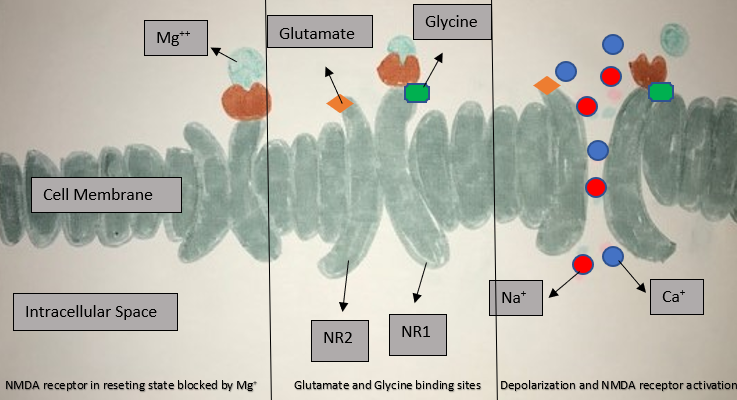This project focuses on the NMDA neuroreceptor and demonstrated hypofunction in correlation with detectable psychosis. 


This project focuses on the NMDA neuroreceptor and demonstrated hypofunction in correlation with detectable psychosis. 
Kristina’s essay and visual representation of the correlation between the NMDA neuroreceptors and hypofunction in detectable psychosis, were both very detailed and helpful in understanding this complex topic.
In her writing, Kristina explained that psychotic disorders are identified when there is difficulty with determining reality from hallucinations and delusions. The NMDA neuroreceptors are ionotropic receptors that maintain synaptic plasticity and memory function. They also play a role in the development of the CNS, underlying learning, memory, and neuroplasticity. She explained that NMDA receptor hypofunction causes an improper inhibition of the mesolimbic dopamine pathway. Because of the increase in dopamine, several different symptoms of psychotic disorders may appear.
In the first picture of Kristina’s visual aid, the NMDA receptor is seen in a resting state while it is blocked by magnesium. In the second picture, you can see the glutamate and glycine binding sites that open the channel. In the third picture, you can see the receptor being activated as the magnesium plug is removed, which then allows for the release of the sodium and calcium ions.
In relating NMDA receptor hypofunction to psychotic disorders, Kristina referenced back to research that shows how glutamate neurotransmission and NMDA receptor hypofunction are both involved in the pathophysiology diagnosis of psychotic disorders. The research has found that during psychosis, there are increases in the glutamate and glycine levels as well as the dysfunction of the NMDA receptor and glutamate neurotranmission.
I agree with Kristina’s conclusion that because of the symptoms involved with psychiatric disorders, further advancement in the study of these illnesses is important for not only properly treating these disorders, but for preventing them whenever possible as well.